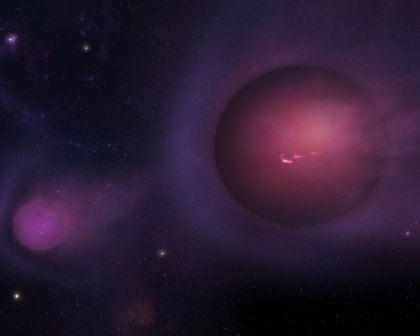Giant 'spitballs' shoot from black hole

That is exactly the case, according to the Harvard-Smithsonian Center for Astrophysics. Working with computers, researchers sought to understand what happens when the black hole at the center of the Milky Way comes in contact with a star.
They found that the black hole’s gravity “rips the star apart, sending a long streamer of gas whipping outward,” a Harvard news release explains. “New research shows that not only can the gas gather itself into planet-size objects, but those objects then are flung throughout the galaxy in a game of cosmic ‘spitball.’”
Eden Girma, an undergraduate student at Harvard University who is lead author on the research,wanted to find out how close these giant “spitballs” come to Earth. “The closest of these planet-mass objects might be within a few hundred light-years of Earth,” the news release explains.
The weight of these objects would be something between Neptune and several Jupiters. Most are zooming along at 20 million mph and swiftly leave the galaxy.
THE MOON IN OLD AGE: The moon is 40 million to 140 million years older than thought, according to new research from University of California, Los Angeles.
Using zircons -- minerals from the moon brought to Earth by the Apollo 14 mission in 1971 -- researchers determined that the moon is at least 4.51 billion years old. The study was led by Mélanie Barboni, a research geochemist in UCLA’s Department of Earth, Planetary and Space Sciences,
Determining the age of moon rocks is difficult “because most of them contain a patchwork of fragments of multiple other rocks,” according to a news release from the university. Barboni analyzed eight zircons in pristine condition. “Specifically, she examined how the uranium they contained had decayed to lead (in a lab at Princeton University) and how the lutetium they contained had decayed to an element called hafnium (using a mass spectrometer at UCLA).”
That analysis enabled the researchers to get a handle on the moon's age.
Related:
Scientists confirm Einstein's prediction
Follow StudyHall.Rocks on Twitter.
If you would like to comment, give us a shout, or like us on Facebook and tell us what you think.

